Oftentimes the things we miss the most from our previous diets are not so much the bread, pastries, or breakfast cereals but rather the small and flavorful additions that we know of as condiments.
I'm talking here of the most popular mayonnaise, ketchup, mustard, pickled cucumber relish, horseradish, barbecue sauce, and Worcestershire sauce.
I already dedicated a post on making homemade mayonnaise, but the other condiments deserve their place as well and can be perfectly healthy Paleo additions, as long as no nasty ingredients are added.
After all, condiments like mustard and tomato based sauces like ketchup have been around for a long time, back when traditional food was all that was available.
Traditionally prepared relish and horseradish, for their part, are probably even healthier additions because they are naturally fermented, thus are a good source of probiotics.
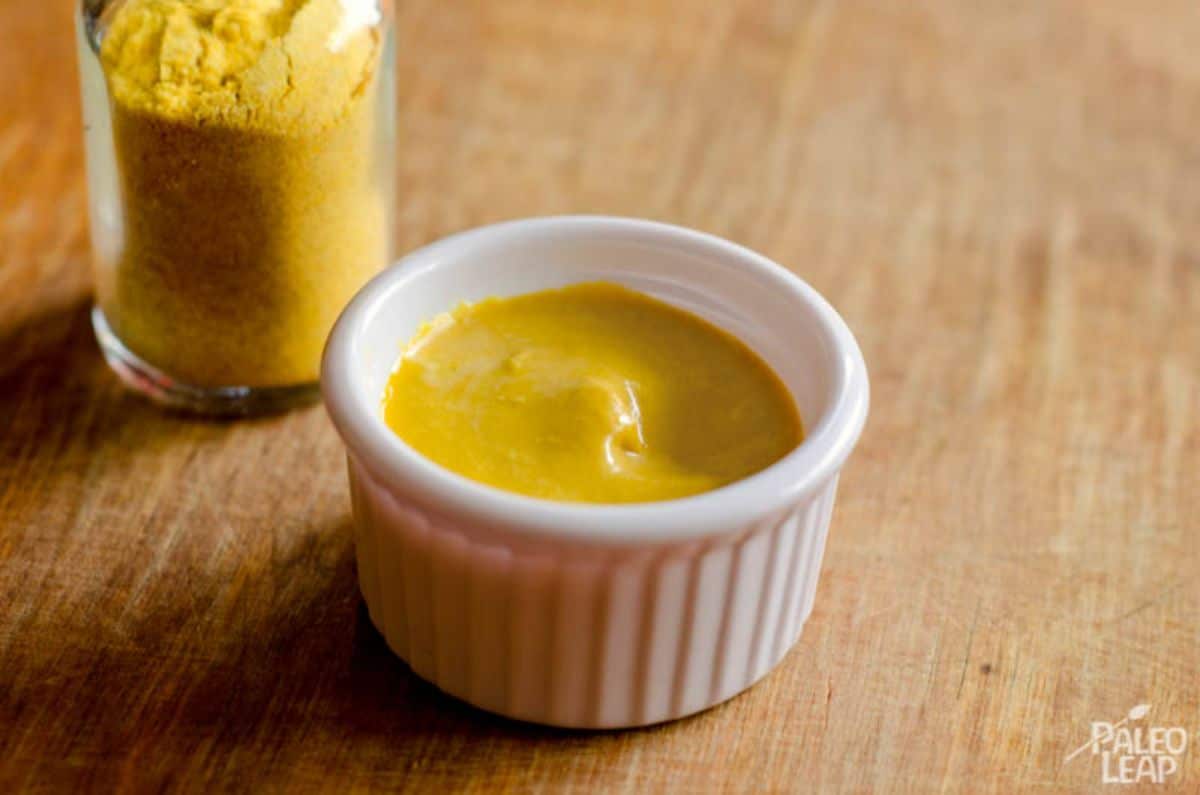
Tomatoes are still a member of the nightshade family, and mustard is made out of a seed, and those two things can still bring about problems for those with a damaged gut or autoimmune disease, but they should not be a problem otherwise. The recipes included here are all sugar-free and grain-free of course.
The other possible drawback is that preparing those condiments will require much more time and planning than simply going out and buying a bottle at the grocery store.
On the bright side, once you get a grasp of the basic recipes, it can become a routine, and you'll know you're eating great, healthy, and wholesome food. You can also decide to prepare bigger batches of some of the condiments, so you don't end up making new batches over and over again.
You're also invited to play around and try out new ways to enjoy those condiments. Mixing mayonnaise with ketchup or mustard, for example, creates a whole new and tasty sauce.
Mustard and ketchup are great with grass-fed bison or beef, especially in the case of a Paleo burger served without the bun.
Mustard is also a great addition to your vinaigrettes and salad dressings and goes hand in hand with cold slices of pork roast. Try ketchup on your eggs, whether they are in the form of an omelet, scrambled, or fried to your liking, and you'll probably never go back.
Enjoy BBQ sauce on almost any kind of meat you happen to eat. BBQ sauce, mustard, ketchup, and Worcestershire sauce are also often used during the cooking process. Pork ribs cooked with BBQ sauce, meatloaf cooked with ketchup, and pork tenderloin cooked with mustard are three classic examples.
Homemade Paleo Condiment Recipes
- Simple ketchup;
- Rich and deep-flavored ketchup;
- Simple mustard;
- Whole-grain mustard;
- Lacto-fermented cucumber relish;
- Simple horseradish;
- Beet horseradish;
- Traditionally fermented horseradish;
- Barbecue sauce;
- Worcestershire sauce;
Ketchup Recipe
Simple ketchup recipe
This is a simple and quick ketchup recipe for the times when you want to prepare the condiment but are in a rush or don't have all the ingredients to prepare the more elaborate ketchup recipe presented below. This one is also very easy to prepare.
The typical recipe calls for some sugar, but a sugar-free version tastes just as good and a little bit tangier. This recipe yields 1.5 cups.
Ingredients
- 1 can (6 ounces) tomato paste;
- 2 tablespoon vinegar or lemon juice;
- ¼ teaspoon dry mustard;
- ⅓ cup water;
- ¼ teaspoon cinnamon;
- ¼ teaspoon salt;
- 1 pinch of ground cloves;
- 1 pinch ground allspice;
- ⅛ teaspoon cayenne pepper, optional;
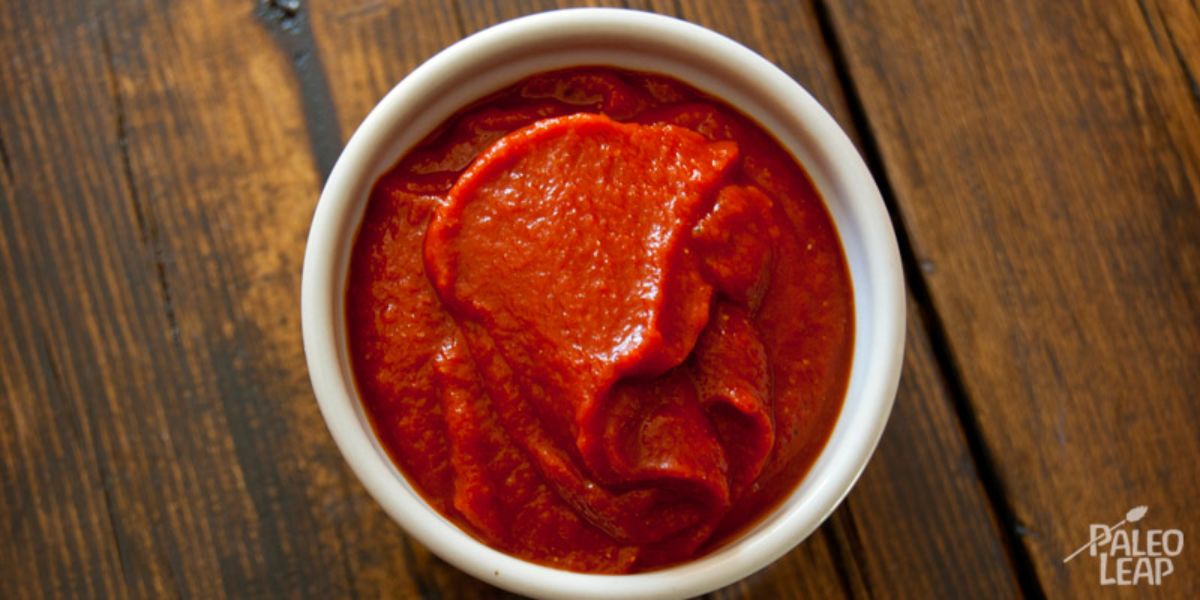
Preparation
- Simply combine all the ingredients in a bowl and whisk well to combine. Refrigerate overnight to let the flavors develop and enjoy!
📖 Recipe

Simple ketchup recipe
Ingredients
- 1 can 6 ounces tomato paste
- 2 tablespoon vinegar or lemon juice
- ¼ teaspoon dry mustard
- ⅓ cup water
- ¼ teaspoon cinnamon
- ¼ teaspoon salt
- 1 pinch of ground cloves
- 1 pinch ground allspice
- ⅛ teaspoon cayenne pepper optional
Instructions
- Simply combine all the ingredients in a bowl and whisk well to combine. Refrigerate overnight to let the flavors develop and enjoy!1 can, 2 tablespoon vinegar or lemon juice, ¼ teaspoon dry mustard, ⅓ cup water, ¼ teaspoon cinnamon, ¼ teaspoon salt, 1 pinch of ground cloves, 1 pinch ground allspice, ⅛ teaspoon cayenne pepper
Nutrition
Rich and deep-flavored ketchup recipe
This is more like the traditional homemade ketchup that we would have seen on kitchen tables a couple of decades ago. It requires a lot of ingredients, but the taste is well worth the trouble.
This recipe yields about 2 cups, but don't be afraid to prepare a larger batch because I've got a feeling that it's going to be popular in your kitchen.
Ingredients
- 1 pound fresh plum tomatoes + 1 pound canned plum tomatoes, or 2 pounds fresh plum tomatoes, chopped;
- 1 large onion, chopped;
- ½ fennel bulb, chopped;
- 1 celery stick, cut into cubes;
- Fresh piece of ginger, about the size of a thumb, chopped;
- 2 cloves garlic, roughly chopped;
- ½ red chili, seeded and chopped finely;
- Large bunch of fresh basil, picked leaves, and chopped stalks;
- 1 tablespoon coriander seeds;
- 2 cloves garlic;
- 1 teaspoon freshly ground black pepper;
- Extra virgin olive oil;
- ¾ cup + 2 tablespoon red wine, balsamic, or apple cider vinegar;
- Sea salt to taste;
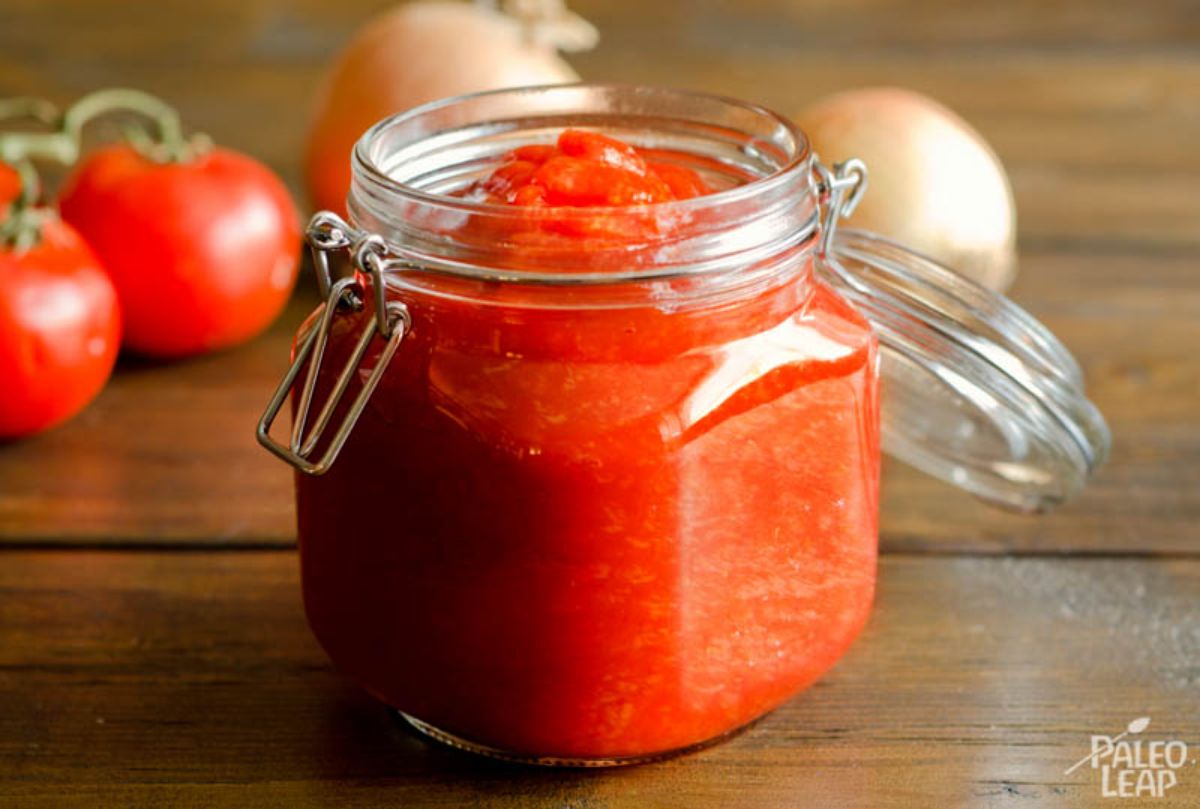
Preparation
- Place the onion, fennel, and celery in a large saucepan with some olive oil, ginger, garlic, chopped chili, basil stalks, coriander seeds, and garlic cloves, and season with salt and 1 teaspoon black pepper.
- Over low heat, cook for about 12 minutes, until the vegetables have softened, stirring occasionally.
- Add 1 ½ cups water and the tomatoes. Let simmer gently until the liquid is reduced by half.
- Add the basil leaves, pour the sauce into a blender or food processor, and process until very smooth.
- Strain the sauce through a sieve into a clean saucepan and add the vinegar.
- Simmer again until it reaches the desired ketchup consistency. Adjust the seasoning to taste.
- Cool in the refrigerator and enjoy. This ketchup recipe can be bottled in sterilized jars and kept for up to 6 months in a cool dark place.
📖 Recipe
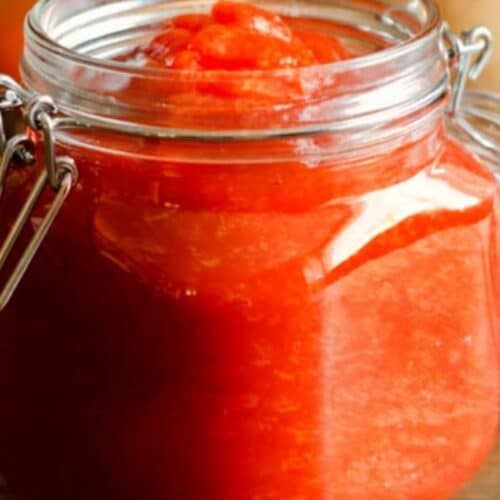
Rich and deep-flavored ketchup recipe
Ingredients
- 1 pound fresh plum tomatoes + 1 pound canned plum tomatoes or 2 pounds fresh plum tomatoes, chopped
- 1 large onion chopped
- ½ fennel bulb chopped
- 1 celery stick cut into cubes
- Fresh piece of ginger about the size of a thumb, chopped
- 2 cloves garlic roughly chopped
- ½ red chili seeded and chopped finely
- Large bunch of fresh basil picked leaves, and chopped stalks
- 1 tablespoon coriander seeds
- 2 cloves garlic
- 1 teaspoon freshly ground black pepper
- Extra virgin olive oil
- ¾ cup + 2 tablespoon red wine balsamic, or apple cider vinegar
- Sea salt to taste
Instructions
- Place the onion, fennel, and celery in a large saucepan with some olive oil, ginger, garlic, chopped chili, basil stalks, coriander seeds, and garlic cloves, and season with salt and 1 teaspoon black pepper.1 pound fresh plum tomatoes + 1 pound canned plum tomatoes, 1 large onion, ½ fennel bulb, 1 celery stick, Fresh piece of ginger, 2 cloves garlic, ½ red chili, Large bunch of fresh basil, 1 tablespoon coriander seeds, 2 cloves garlic, 1 teaspoon freshly ground black pepper, Extra virgin olive oil, Sea salt to taste, ¾ cup + 2 tablespoon red wine
- Over low heat, cook for about 12 minutes, until the vegetables have softened, stirring occasionally.
- Add 1 ½ cups water and the tomatoes. Let simmer gently until the liquid is reduced by half.
- Add the basil leaves, pour the sauce into a blender or food processor, and process until very smooth.
- Strain the sauce through a sieve into a clean saucepan and add the vinegar.
- Simmer again until it reaches the desired ketchup consistency. Adjust the seasoning to taste.
- Cool in the refrigerator and enjoy. This ketchup recipe can be bottled in sterilized jars and kept for up to 6 months in a cool dark place.
Nutrition
Mustard Recipe
There are many ways to prepare mustard, but the basis is typically mustard powder or mustard seeds. The popular French mustard with the seeds is usually called whole-grain mustard, even though it's not a grain but a seed. T
he easiest mustard to prepare is a basic mustard made with mustard powder and water. Other mustards, like Dijon and whole-grain mustard, will take more preparation time as the seeds have to soak, and the mustard should sit for a few days for the flavors to develop. The seeds are often soaked in white wine for an even deeper flavor.
Prepared mustard will last for about a month and can be kept out of the refrigerator, but refrigeration stops the heat from developing further.
A good idea is to refrigerate your mustard when the desired heat is achieved. Homemade mustard won't be as bright yellow as store bought mustard, but a bit of added turmeric will do the trick to obtain the same bright color.
Preferably choose glass jars to prepare and store your mustard.
Simple mustard recipe
This is a very basic recipe that can be prepared on demand when you feel like having some mustard. It only takes 1 part water to 1 part mustard powder, and you'll get a nice hot mustard. Let it stand for a bit and the heat will reduce.
You can play around with the seasoning and use different herbs and spices to create different versions. Vinegar or lemon juice will also add a pleasant tanginess.
Ingredients
- ½ cup mustard powder;
- ½ cup water;
- Sea salt to taste;
Preparation
- Combine the mustard powder and water in a bowl and mix well.
- Optionally, add a bit of chopped fresh parsley or basil, lemon or lime zest, and a tablespoon or two of your favorite vinegar.
- Let the mustard stand for about 15 minutes before enjoying it.
Whole-grain mustard recipe
Feel free to play around with this recipe by adding any of your favorite fresh herbs. Sun dried tomatoes, and fresh basil are excellent additions.
Ingredients
- ¼ cup yellow mustard seeds;
- ¼ cup brown mustard seeds;
- 1 cup white wine or water;
- 4 teaspoon mustard powder;
- ¼ cup white wine vinegar;
- ½ teaspoon sea salt;
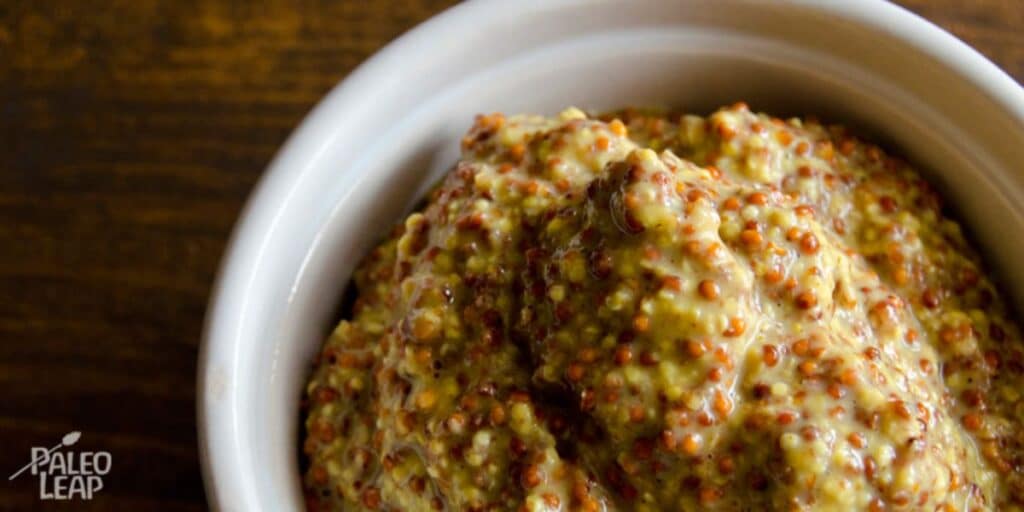
Preparation
- Soak the mustard seeds in white wine or water overnight.
- Place the seeds and soaking liquid in a blender or food processor with the mustard powder, vinegar, and sea salt. The process to a paste consistency.
- Put in a glass jar, cover, and refrigerate for about 4 days before serving.
📖 Recipe
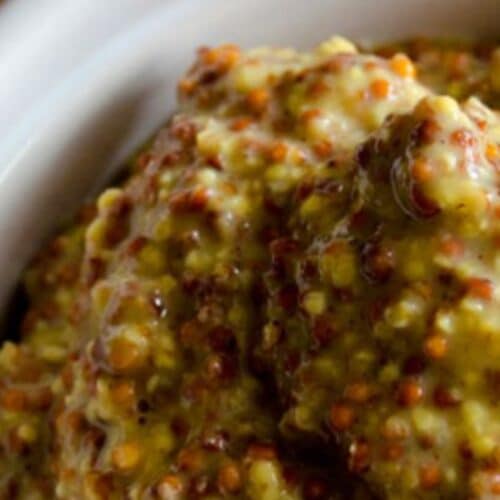
Whole-grain mustard recipe
Lacto-fermented cucumber relish Recipe
A relish is usually a preparation of fermented fruits or vegetables used as a condiment. All kinds of relishes can be prepared, but the cucumber relish is probably the most well-known.
Originally from Sweden, it's traditionally called Bostongurka, or Boston cucumber. Most store bought relishes use vinegar for pickling, but this traditional recipe uses lacto-fermentation to create the acidic taste and probiotic value of that food.
Bubbies is a popular brand available in most health food stores that sell real unpasteurized cucumber relish.
The most popular additional flavors used in cucumber relish are dill, garlic, and mustard seeds. The following recipe uses fresh dill. Y
ou can use a vegetable starter culture like those available at Cultures for Health to ensure the success of the lacto-fermentation, but I find that simply using sea salt yields great results.
Ingredients
- 4 large cucumbers, chopped finely;
- 2 tablespoon fresh dill or 2 teaspoon dried;
- 2 tablespoon sea salt;
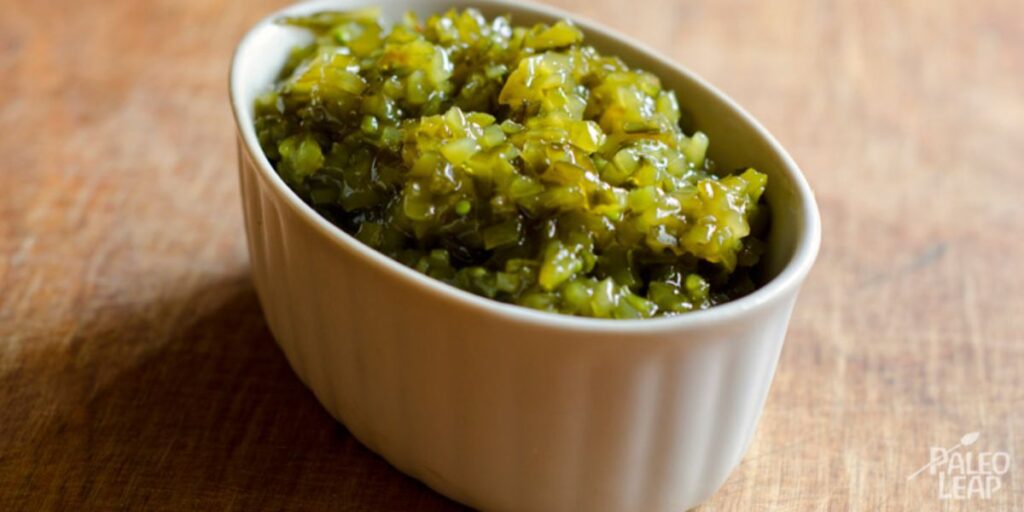
Preparation
- In a bowl, mix the chopped cucumbers, dill, and sea salt.
- In a quart sized glass jar equipped with a lid, pack the cucumber mixture tightly with a wooden spoon or your fist, making sure to extract the most water out of the mixture. You want the water to cover the mixture for the fermentation process to happen and to prevent mold from forming.
- Add some filtered water if needed.
- Make sure that there is at least 1 inch of room between the liquid and the top of the jar, as the mixture will expand during the fermentation time.
- Cover the glass jar tightly with the lid and leave it in a warm place for 2 to 5 days. You can taste the relish during the fermentation process to know if it's ready or not.
- When ready, transfer to the refrigerator and enjoy.
📖 Recipe
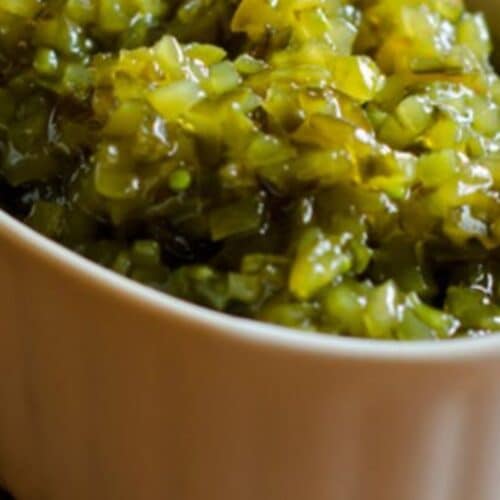
Lacto-fermented cucumber relish Recipe
Horseradish Recipe
Horseradish is the name of a root vegetable of the Brassica family used to prepare a horseradish condiment, often simply called horseradish or prepared horseradish. It has a quite pungent and hot taste and goes well with roasted red meat or mixed in some mayonnaise.
Today most prepared horseradish is made with vinegar, but the traditionally prepared horseradish is lacto-fermented like sauerkraut. This makes for a very healthy probiotic condiment that will last for months in the refrigerator.
You might find it difficult to find fresh horseradish roots, but most well-stocked or ethnic grocery stores will have them, especially when in season.
Simple horseradish recipe
This is the simplest of recipes, and it's quick to prepare. While it won't feature the same deep and fuzzy flavor as the traditionally prepared and fermented horseradish, it's still great.
Ingredients
- 1 cup peeled and minced horseradish root;
- ¾ cup white wine vinegar;
- ¼ teaspoon sea salt;
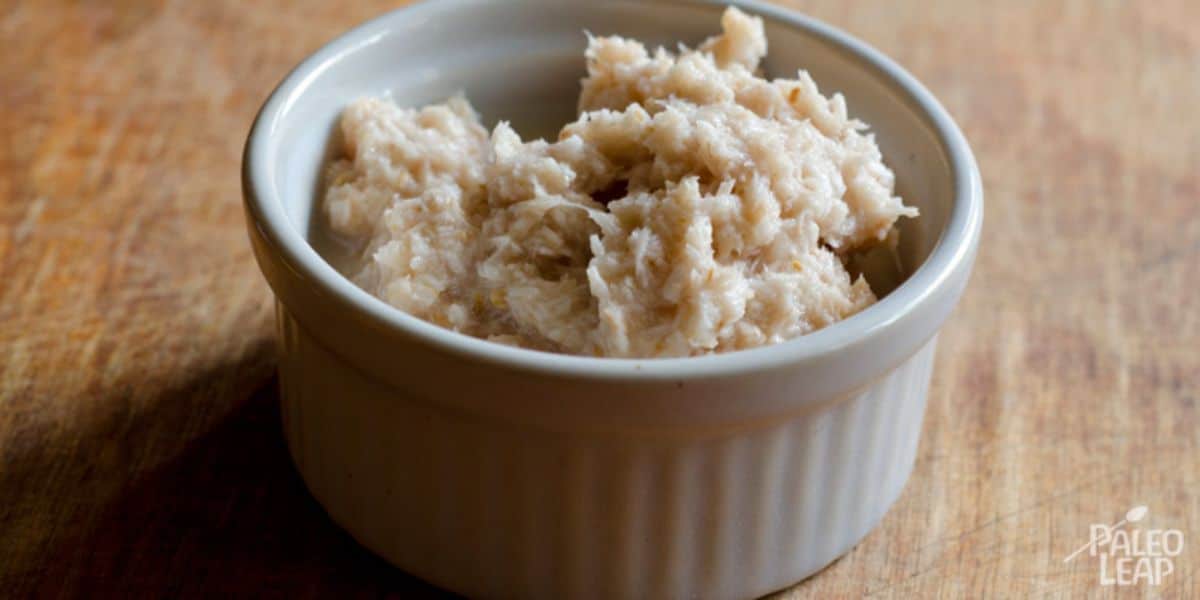
Preparation
- Process all the ingredients in a blender or food processor to a paste.
- Enjoy right away or store in the refrigerator.
📖 Recipe

Simple horseradish recipe
Beet horseradish recipe
This is a nice twist on the basic horseradish, and you'll often see the beet horseradish variation in stores, featuring a bright red color.
Ingredients
- ¾ lb horseradish root, minced;
- 1 cup finely chopped beets;
- ¾ cup apple cider vinegar;
- ½ teaspoon sea salt;
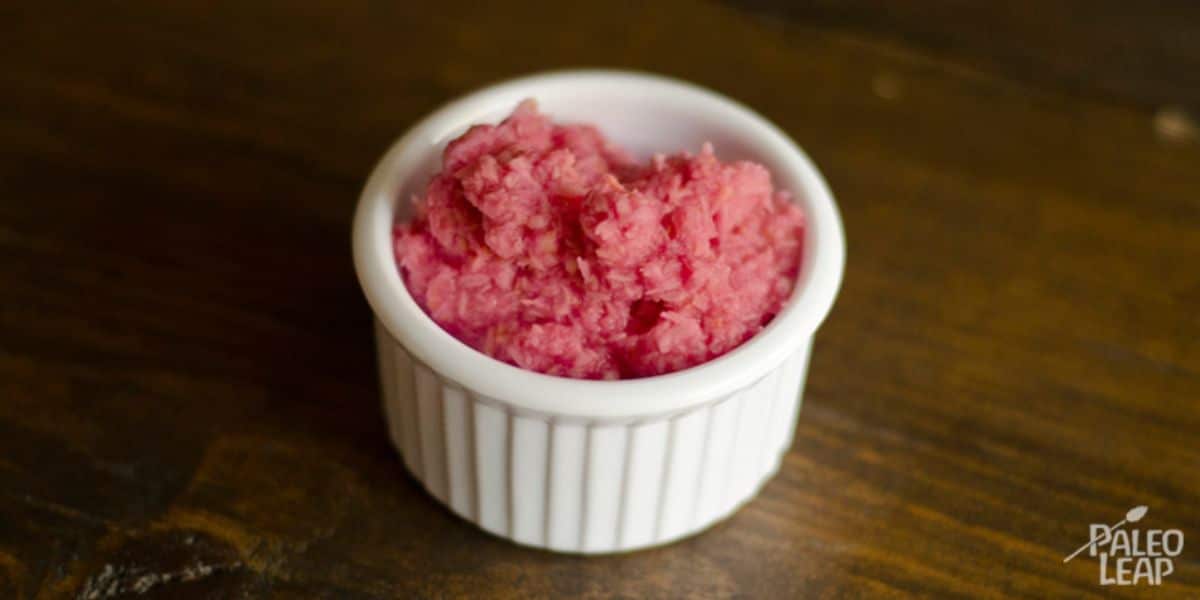
Preparation
- Process all the ingredients in a blender or food processor to a paste.
- Enjoy right away or store in the refrigerator.
📖 Recipe
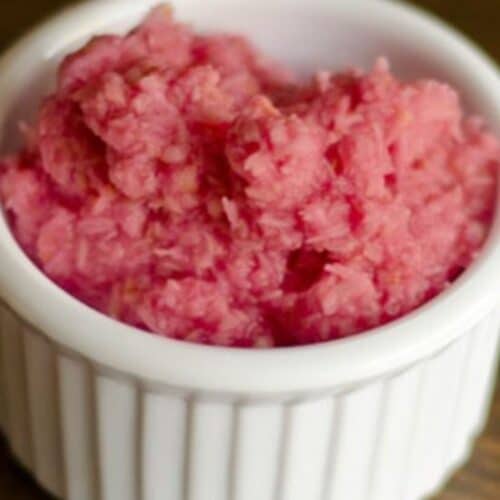
Beet horseradish recipe
Traditionally fermented horseradish recipe
This is the recipe for the real traditional horseradish. This one requires between 3 to 7 days of fermentation, but it's a nice experiment to try with the little ones, and it will give you a wonderful pungent probiotic condiment.
You will also need a vegetable starter culture of some kind for the fermentation process to happen. Most health food stores will carry them, but you can also get a starter online at Cultures for Health. Caldwell and Body Ecology are good brands.
These starters contain specific strains of bacteria that are especially suited for vegetable fermentation. You'll be able to use them for all your vegetable fermentation needs. Fresh whey can also be used as a starter. This recipe yields 1 cup of horseradish.
Ingredients
- 1 cup peeled and finely chopped horseradish root;
- 1 packet vegetable culture starter;
- 2-4 tablespoon water;
- 1 ½ teaspoon sea salt;
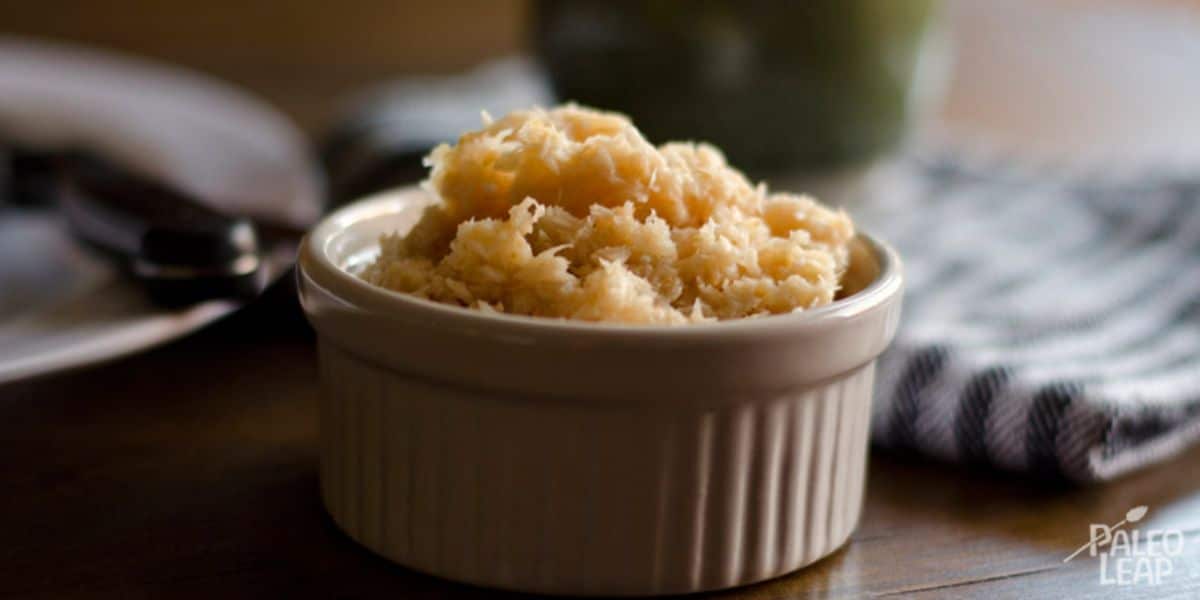
Preparation
- In a food processor, combine the horseradish root, starter culture, and sea salt and pulse to blend the ingredients.
- Add about 3 tablespoon water and process again for about three minutes until the preparation takes the consistency of a paste. Add more water if necessary.
- Place the horseradish paste in a small glass jar and add water on top to fill the jar.
- Cover loosely with the lid and let stand in a warm place for between 3 to 7 days.
- When ready, store it in the refrigerator and enjoy!
📖 Recipe
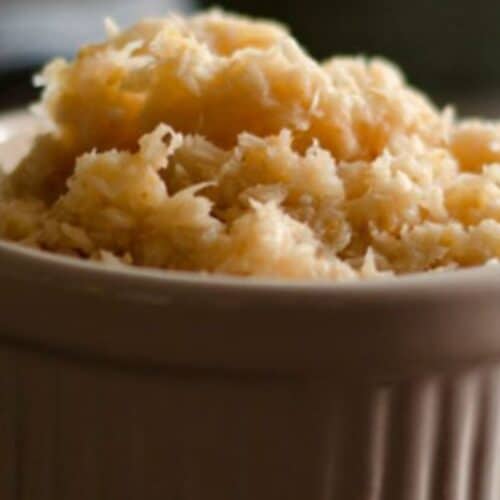
Traditionally fermented horseradish recipe
Barbecue sauce recipe
This BBQ sauce will require even more involvement than most of the other condiments because it calls for homemade mustard, ketchup, and Worcestershire sauce.
I think the best way to tackle it is to prepare BBQ sauce only when you already have those other condiments handy or if you decide to make a batch of all of those condiments all at once. It can become part of your weekly ritual to prepare some of the Paleo foods on a given day and to prepare some of the condiments at the same time.
This sauce has a nice smoky flavor thanks to the smoked paprika and will go well with your barbecued meat or simply as a side condiment with beef, pork, or chicken. Unlike most barbecue sauces you'll find, this one doesn't use any sugar.
Ingredients
- 1 onion, minced;
- 1 clove garlic, minced;
- 1 can (6 oz) tomato paste;
- ½ cup apple cider vinegar;
- ½ cup water;
- ¼ cup homemade ketchup;
- 3 tablespoon homemade mustard;
- 1 tablespoon Worcestershire sauce;
- 1 pinch of ground cloves;
- 1 pinch cinnamon;
- Smoked paprika to taste;
- Hot sauce to taste, optional (check the ingredients and chose a high-quality sauce);
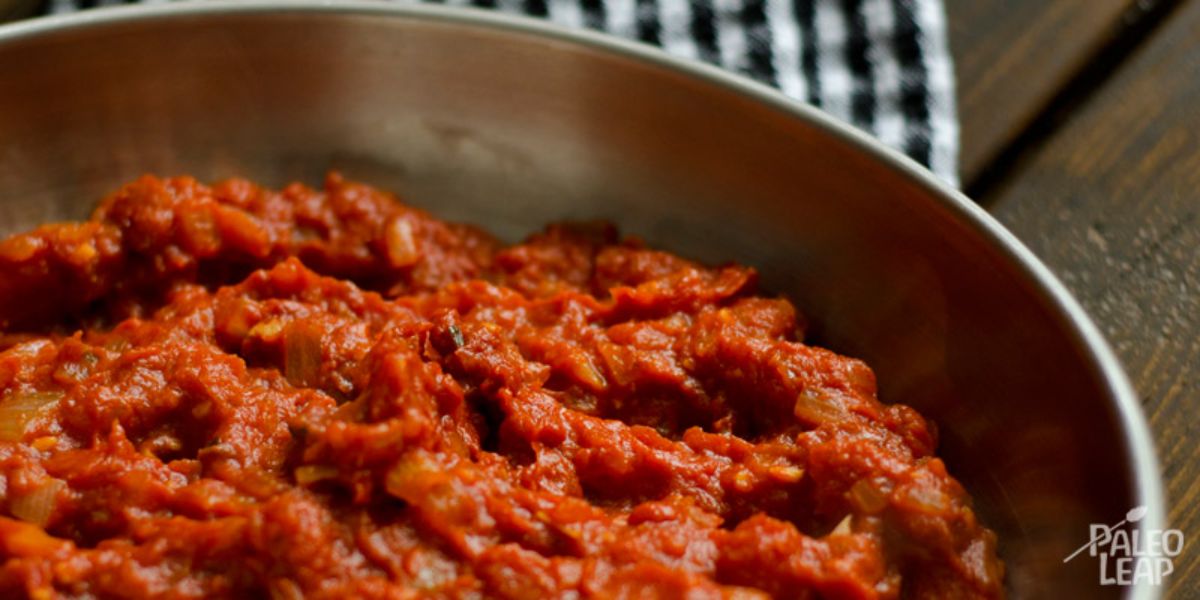
Preparation
- In a large frying pan, with a bit of cooking fat, brown the onion for about 4 minutes.
- Add the garlic and cook for another minute.
- Add all the other ingredients and simmer for 30 minutes.
- Taste the sauce and adjust it with more smoked paprika, vinegar, or hot sauce to the desired taste.
- Cool and store in the refrigerator.
📖 Recipe
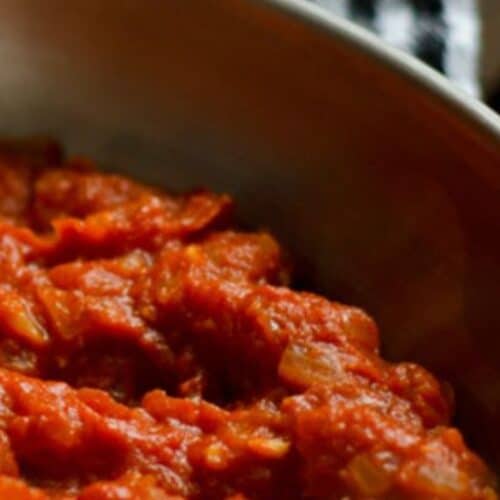
Barbecue sauce recipe
Worcestershire sauce recipe
This sauce is traditionally a fermented sauce using anchovies, but the traditional recipe also calls for molasses and some hard-to-find ingredients. This simpler recipe contains perfectly healthy ingredients.
Ingredients
- ½ cup apple cider vinegar;
- 2 tablespoon water;
- 2 tablespoon coconut aminos;
- ¼ teaspoon ground ginger;
- ¼ teaspoon mustard powder;
- ¼ teaspoon onion powder;
- ¼ teaspoon garlic powder;
- ⅛ teaspoon cinnamon;
- ⅛ teaspoon freshly ground black pepper;
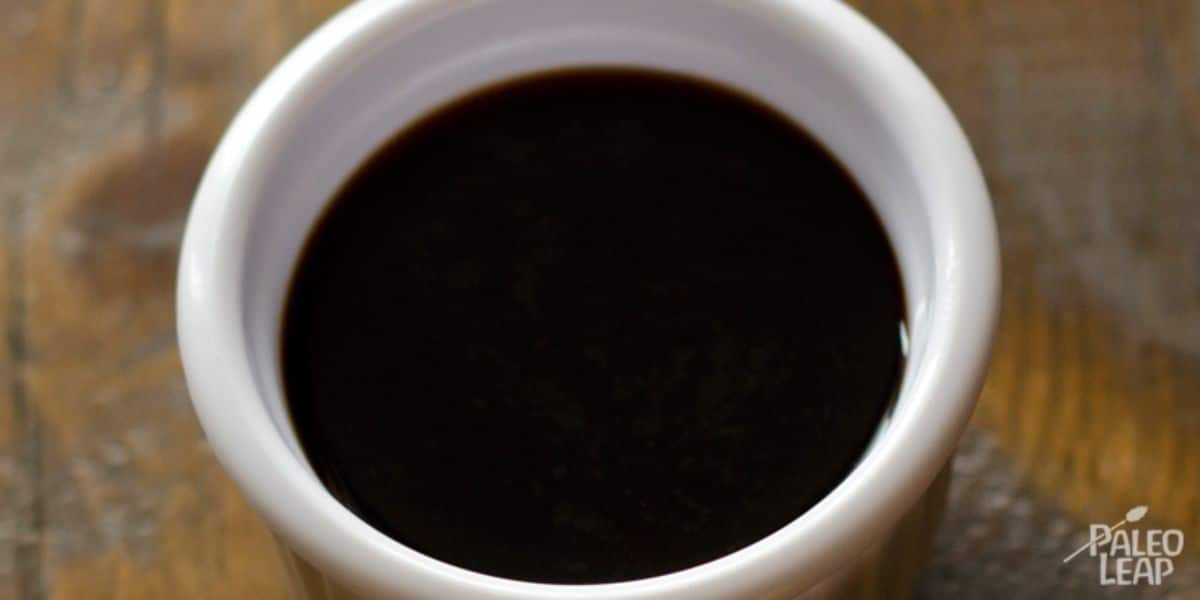
Preparation
- Combine all the ingredients in a saucepan and slowly bring to a boil while stirring frequently.
- Let simmer for about a minute for the flavors to develop.
- Cool and store in the refrigerator.
📖 Recipe


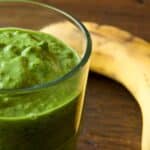
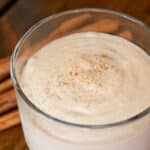
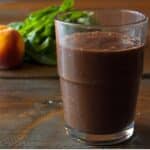

Leave a Reply